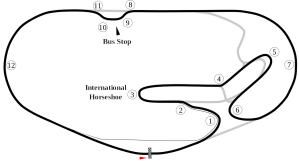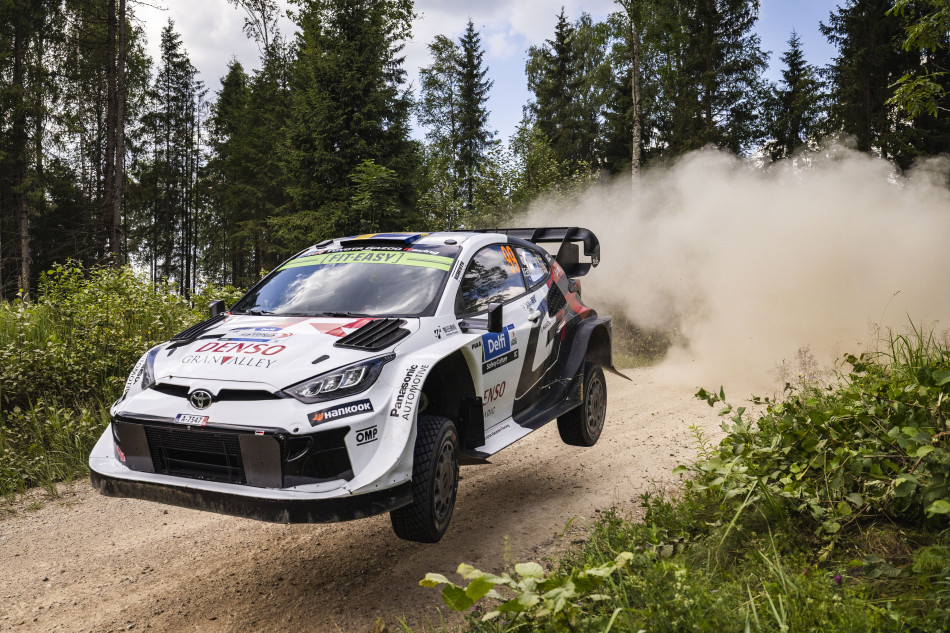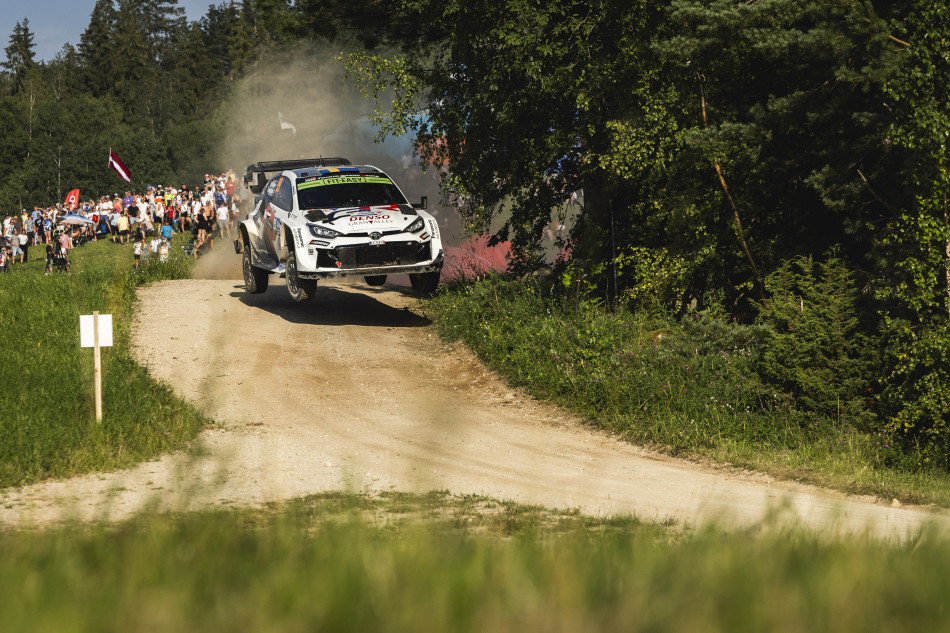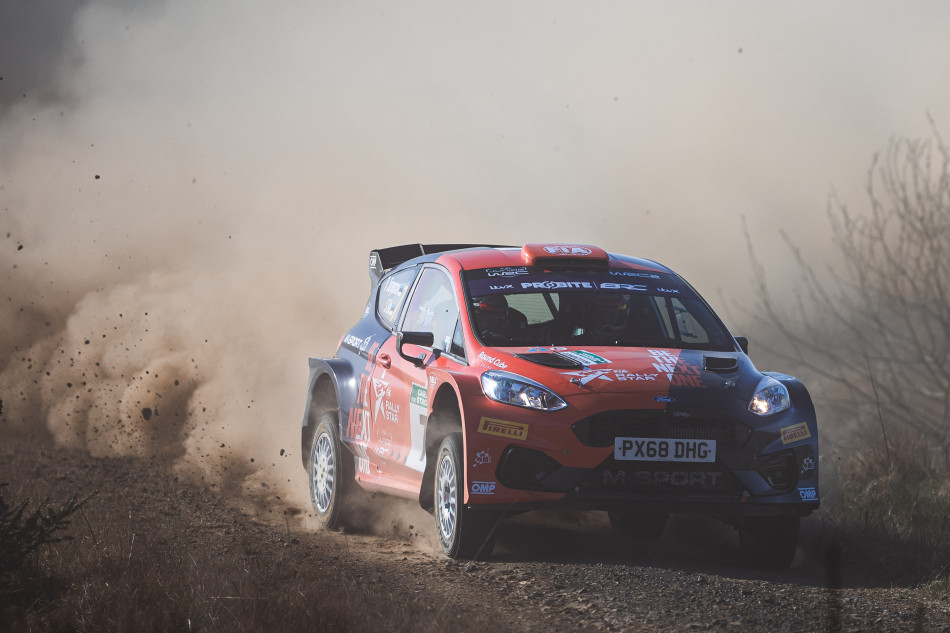
I thought Daytona was a NASCAR Thing?
It’s certainly famous for NASCAR. Love it or hate it, the Daytona 500 is one of the biggest motorsport events of the year. The NASCAR festival starts early in February, but a couple of weeks before that, the IMSA Weather Tech Sportscar Championship kicks off with a 24 Hour event on the infield road course.
The first 24 Hours of Daytona was held in 1966, just in time for the Ford versus Ferrari sportscar battles. It has seen the likes of Ford, Ferrari, Porsche and Lola fighting for the overall victory. The races status has fluctuated over the decades – sometimes being part of a World Championship, others being part of the national IMSA GT Championship. Since the late 90s, the event has been the opening round of the Grand Am Series and lends its name to the Daytona Prototype class.
Fortunately, in late 2013 Grand Am and IMSA set aside their differences and joined forces to form the United Sportscar Championship – what we currently know as the IMSA WeatherTech SportsCar Championship. The unification brought Le Mans prototypes to the high banks of Daytona for the first time since 2003.
What’s the road course like?
The Daytona Infield Road Course has never really been considered one of the world’s great drivers circuits. It consists of the majority of the oval, a chicane and a series of hairpins. So on the face of it, it isn’t amazing. Things start getting more interesting when you start looking at the fine details however.
The course runs anti-clockwise and comes off the oval quite early on, coming downhill into the deceptively difficult turn 1. The braking zone is downhill, left kinked, and has a transition off of the banking, onto the apron, and then onto the flat of the road course. And on top of this, it’s partially blind due to the pit lane exit wall on the left hand side. Turn 2 is a simple enough easy flat chicane on its own, but add in multi-class racing traffic and it’s a difficult corner. The agile Prototypes have no problem filtering through, but the heavier GT cars find it a bit harder. There’s a surprising number of accidents and bottlenecks that occur in turn 2.
The infield section of the course looks relatively simple, but consider the entire situation. The Daytona road course is high speed, so the cars are setup for low downforce. The race is run in January, so temperatures are low, which means less grip for the tyres. These factors make the hairpins a bit more challenging than they would normally be. The turn 4 kink is easy flat in a Prototype, but less so in a GT car. Side by side doesn’t really work, as the car on the outside runs out of road quickly.
Turn 6 is also deceptive. The corner radius opens up on the exit, allowing drivers to throttle up quite early. The circuit width widens, and the track crosses the apron and moves onto the full oval banking. These factors combined mean there are multiple lines that can be taken on the exit. Then it’s full throttle through the turn 7, often referred to as NASCAR 1 and NASCAR 2 and down the back straight.
The bus stop chicane is unlike most modern chicanes. Although the entry is slow and tight, the exit opens up and requires the driver to attack the kerbs aggressively. It’s single file all the way through, extremely bumpy, and has transitions off and onto the banking. It’s not as simple as it looks. After the exit it’s all about power again. Open up the throttle for a blast round NASCAR 3 and 4 before reaching that awkward braking zone for turn 1 again.
The unique layout can produce interesting problems when it rains too. The banking has a tendency to dry quite quickly as water runs down it, and the high speeds dry the track. This can cause overheating of wet weather compound tyres. But conversely, the infield dries slowly. Combine that with low temperatures, and it makes slick tyres difficult to switch to in mixed conditions.
The Daytona road course may not have the elevation of Spa, or the sweeping curves of Road Atlanta, but it can be interesting in its own way. It’s a technical circuit which can lend itself well to multi-class racing. And let’s be honest, 31° banking is pretty cool.
 Photo: Cadillac
Photo: Cadillac
What cars are racing?
If you haven’t been watching the IMSA Weather Tech Series, you really should start. The Daytona Prototype International class has, arguably, the best racing of any modern prototype class. The cars use the ACO LMP2 class as a base, with manufacturers allowed to use their own engine and modified the bodywork to create a prototype that is specific to them, but still relatively cheap. The result is entries from Cadillac, Nissan, Mazda and Acura, and some stock LMP2 cars in private hands.
The GTLM class may not be the fastest in IMSA, but many regard it as the best.
The teams running these cars are no amateurs either. Team Penske runs the Acura program, Wayne Taylor Racing are the primary Cadillac team, and Joest have taken over running the Mazda operation. Many, including myself, see the upcoming 2018 IMSA season as the beginning of American Sportscar Racing glory years. Manufacturers running unique and varied cars, backed up by a healthy privateer grid.
Daytona, along with Sebring, is very attractive to European teams as well. Sebring has long acted as an extended test session for teams planning on running in the WEC or ELMS. Now that the same cars are eligible for Daytona, many of the LMP2 teams are looking towards the high banks as a guest appearance. Jackie Chan DC Racing and United Autosports are making the trip over the water to compete in the Rolex 24.
 Photo: Corvette
Photo: Corvette
In the GTLM class, we’ll see the competition debut of the BMW M8 GTE. Replacing the M6 GTLM (BMW never ran the M6 in ACO GTE competition), the aggressive new BMW M8 goes up against the established works efforts from Corvette, Ford and Porsche, and the privately owned Risi Competizione Ferrari 488.
The GTLM class may not be the fastest in IMSA, but many regard it as the best. It produces variety, close racing, wheel to wheel battles, incidents, accidents and drama, and it does so consistently. GTLM may be sportscar racing, but it often bears a closer resemblance to touring car racing.
The GTD class is filled with customer cars. Audis, Lamborghinis, Ferraris, Porsches, Acuras, Lexus, Mercedes. Only a handful of GT3 brands are not represented in the IMSA GTD class. It’s like having an American Blancpain series, on track with Prototypes. What’s not to love about that?
What drivers are racing?
This is where things get out of hand. A full entry list will be posted later this week, but for now we’ll just list some of the drivers. Juan Pablo Montoya, Bruno Senna, Helio Castroneves, Lance Stroll, Ricky Taylor, Simon Pagenaud, Mike Conway, Christian Fittipaldi, Oliver Pla, Pipo Derani, Nico Lapierre, Harry Tincknell, Oli Jarvis, Paul di Resta, Romain Dumas and Loic Duval.
And some guy called Fernando Alonso?
I’ll give it a go. Where can I watch?
If you’re in North America, then check your local TV listings. Fox Sports tends to be network carrying IMSA. For the rest of the world, the entire event is streamed live in sound and vision on IMSA TV. IMSA radio is operated by Radio Show Limited – you may know them as Radio Le Mans.
After the race has broadcast in the US, IMSA uploads full races directly to YouTube. We’ll post that directly to tRL TV so you can watch it in your own time, and don’t have to go searching for it.
If you don’t like remember where all the different races are streamed, don’t worry about it. Just come straight to theRACINGLINE.net and we’ll have a link to the stream on the front page. You’ll also be able to find a Live Timing system for the event on our site. Other resources such as entry lists, time tables and spotter guides will be available in coming days. Just check back for our full previews and resources soon.






















